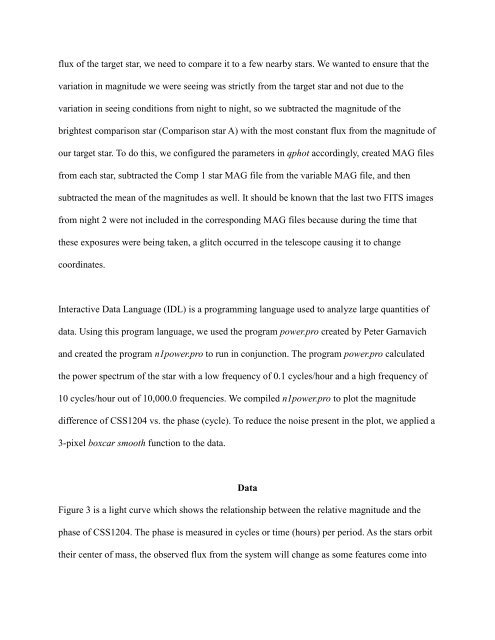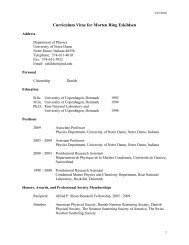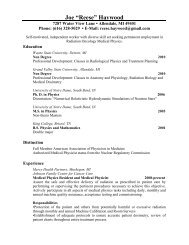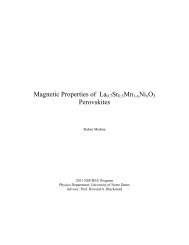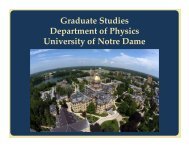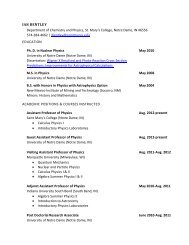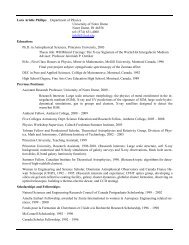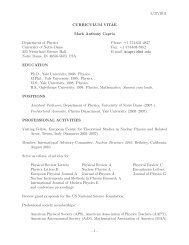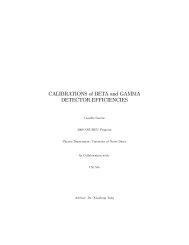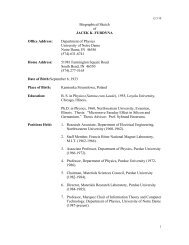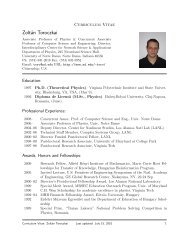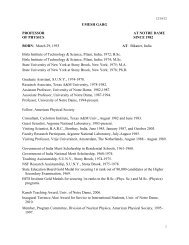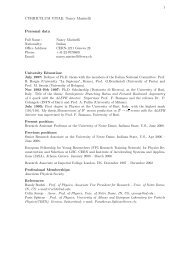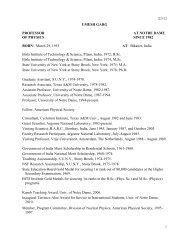Determining the Orbital Period of the Cataclysmic Variable ...
Determining the Orbital Period of the Cataclysmic Variable ...
Determining the Orbital Period of the Cataclysmic Variable ...
You also want an ePaper? Increase the reach of your titles
YUMPU automatically turns print PDFs into web optimized ePapers that Google loves.
flux <strong>of</strong> <strong>the</strong> target star, we need to compare it to a few nearby stars. We wanted to ensure that <strong>the</strong><br />
variation in magnitude we were seeing was strictly from <strong>the</strong> target star and not due to <strong>the</strong><br />
variation in seeing conditions from night to night, so we subtracted <strong>the</strong> magnitude <strong>of</strong> <strong>the</strong><br />
brightest comparison star (Comparison star A) with <strong>the</strong> most constant flux from <strong>the</strong> magnitude <strong>of</strong><br />
our target star. To do this, we configured <strong>the</strong> parameters in qphot accordingly, created MAG files<br />
from each star, subtracted <strong>the</strong> Comp 1 star MAG file from <strong>the</strong> variable MAG file, and <strong>the</strong>n<br />
subtracted <strong>the</strong> mean <strong>of</strong> <strong>the</strong> magnitudes as well. It should be known that <strong>the</strong> last two FITS images<br />
from night 2 were not included in <strong>the</strong> corresponding MAG files because during <strong>the</strong> time that<br />
<strong>the</strong>se exposures were being taken, a glitch occurred in <strong>the</strong> telescope causing it to change<br />
coordinates.<br />
Interactive Data Language (IDL) is a programming language used to analyze large quantities <strong>of</strong><br />
data. Using this program language, we used <strong>the</strong> program power.pro created by Peter Garnavich<br />
and created <strong>the</strong> program n1power.pro to run in conjunction. The program power.pro calculated<br />
<strong>the</strong> power spectrum <strong>of</strong> <strong>the</strong> star with a low frequency <strong>of</strong> 0.1 cycles/hour and a high frequency <strong>of</strong><br />
10 cycles/hour out <strong>of</strong> 10,000.0 frequencies. We compiled n1power.pro to plot <strong>the</strong> magnitude<br />
difference <strong>of</strong> CSS1204 vs. <strong>the</strong> phase (cycle). To reduce <strong>the</strong> noise present in <strong>the</strong> plot, we applied a<br />
3-pixel boxcar smooth function to <strong>the</strong> data.<br />
Data<br />
Figure 3 is a light curve which shows <strong>the</strong> relationship between <strong>the</strong> relative magnitude and <strong>the</strong><br />
phase <strong>of</strong> CSS1204. The phase is measured in cycles or time (hours) per period. As <strong>the</strong> stars orbit<br />
<strong>the</strong>ir center <strong>of</strong> mass, <strong>the</strong> observed flux from <strong>the</strong> system will change as some features come into


